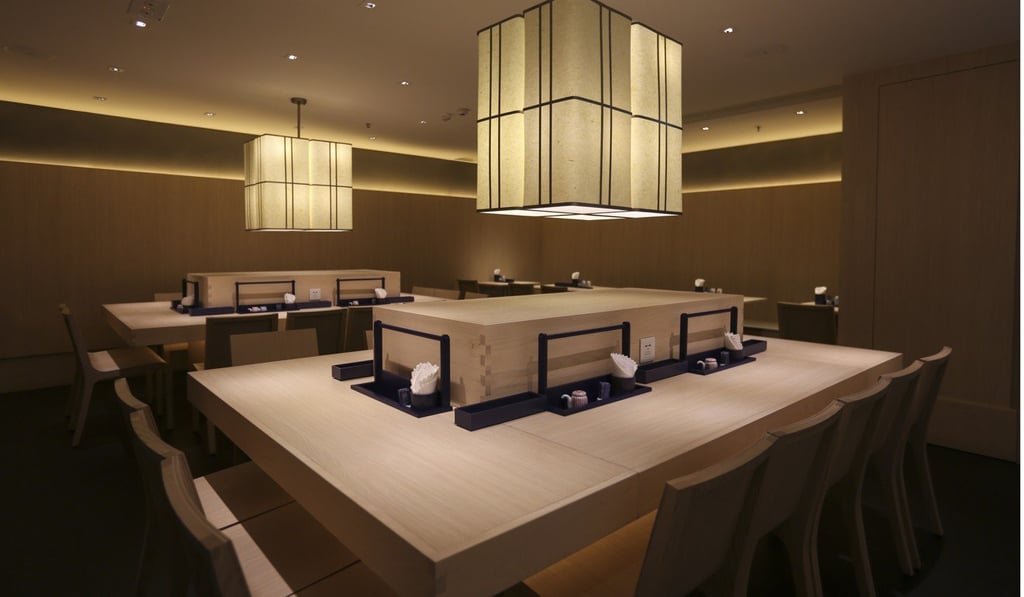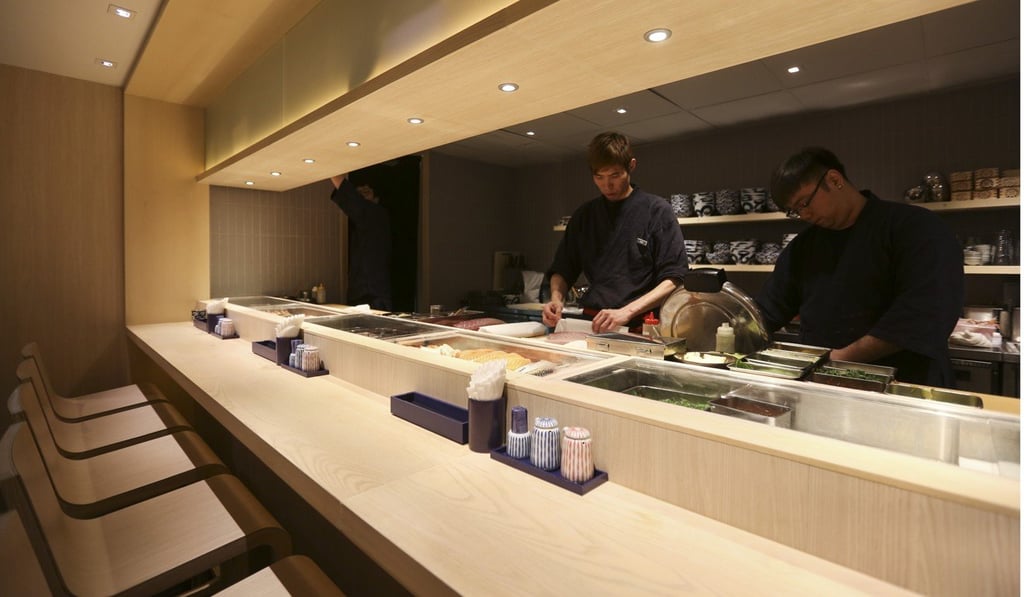Steve Leung dishes out insight on the world of design – and why he has three kitchens at home

Steve Leung’s attention to detail shines at new Hong Kong restaurant Hokkaidon
When Steve Leung arrives for lunch, he enters so unassumingly that you almost miss him. There is an unpretentious air around him as he settles down at Hokkaidon, a Japanese restaurant in Tai Koo that is just shy of being in business for six months.
Hokkaidon, which Leung designed, also has an unassuming simplicity to go with its elegant décor. The chic minimalist look is enhanced by the warm tones of cypress wood paired with the deep blue hue produced by aizome, a traditional indigo-dyeing method in Japan. The same blue shade is used on the large decorative panels on the walls that depict fish and prawns, whimsically jumping and swimming through the waves. This has a calming atmosphere.
We leave our lunch selection in the capable hands of executive chef Fei Ngan, who was previously head chef of Gonpachi.

We are served starters of white fish carpaccio topped with salmon roe and “yukhoe” tuna with avocado. The carpaccio is marinated in a light sauce, while the tuna “yukhoe” - Korean for raw meat, usually beef - is topped with the golden yolk of a quail egg. We gently break the yolk apart and coat each piece of tuna with it.
Leung, who has arrived for lunch from an on-site building visit, appreciates the dishes, especially the carpaccio. “I’m a bit too warm [today] and having this is refreshing, especially in the summertime,” he says.
On-site visits are one of the many tasks Leung undertakes as founder of Steve Leung Designers (SLD). While he and his team have completed numerous high-profile projects for architectural, product and interior design, he is best known for interior design. He is a familiar face in the F&B industry, having designed Sushi Ta-Ke and Inagiku restaurants.
This wasn’t always the case. When Leung started SLD 20 years ago, it was after a decade of doing mostly architectural consultancy work that he decided to restructure and start two companies: Steve Leung Architects and Steve Leung Designers.
“I won’t say [it was] frustrating, but it’s not easy to practise as an architect in Hong Kong,” Leung reflects. “It’s difficult to survive.”

Part of the reason lay in it being difficult for small to medium-sized companies to land lucrative contracts in real estate-poor Hong Kong; most usually went to bigger firms.